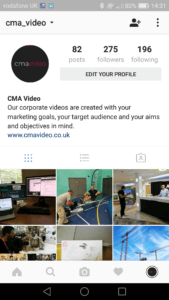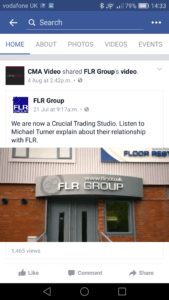In our last blog we looked at video marketing being part of an overall marketing plan and ensuring its integrated into your plan. We also looked at ensuring that the look and feel of any video production is in line with any marketing activity elsewhere so that there is a brand consistency.
Once you know where video sits in the overall plan and you’ve made sure that your brand guidelines flow through any video production then its time to look at the actual content, the channels you intend to distribute through and how it will sit and interact with other marketing activity.

We are increasingly finding that shorter videos are well received by viewers. Perhaps 18 months ago a three minute promo video was the norm but now its half that and often even less. The length of the video and the content should be guided by the audience and the distribution channel, a Facebook video for example will perform better if its shorter and to the point. Its viewed in a timeline situation meaning that viewers are actively looking to scroll down and move on so being able to get the message across in as quick time as possible is important here. While on YouTube, the video is held and stored for a much longer period (possibly forever?) meaning that people are actively searching out the video content and will watch for a longer time. Something like Instagram is similar to Facebook whereby viewers are scrolling through a timeline plus you are limited to a one minute length for video.

Each of these platforms also has different demographics and as such the content as well as the video length should be adapted accordingly. Its also worth noting that different channels will be viewed on different devices so Instagram will be viewed on mobile while a desktop is more likely to be the platform for YouTube. How the video looks on a mobile device may be very different to the larger screen of a desktop or laptop.

Any video marketing campaign should also be integrated with other online and offline marketing activity, there is no reason why activity on different platforms can’t compliment each other. Using things like QR codes on printed material can direct people to online activity or a call to action on a video telling people to visit a store can also work well. The key is that whether its video marketing activity or offline marketing activity it doesn’t need to stand alone. If this is something that you intend to do then its also vital to ensure brand consistency across all of the channels. This can range from using the same brand colours, font and logo through to the same key messages that your business might have. Too many times people think that because its on a different platform it doesn’t need to look the same but it really does.
So, the key here is don’t treat video marketing any differently to any existing marketing you are doing. It can and should all be linked together so that your audience knows exactly what they are getting when they see any form of communication from your business. Customers like familiarity and if they can identify any piece of marketing collateral from the look and feel alone then its half the battle of your brand recognition won straight away.